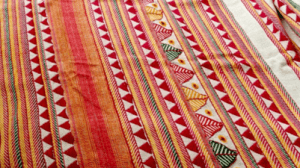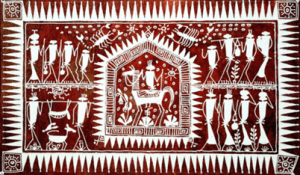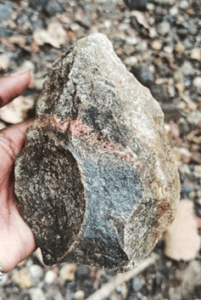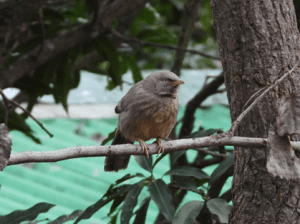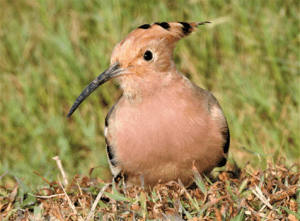SUPREME COURT’S VERDICT ON BILKIS BANO CASE
TAG: GS 2: POLITY
THE CONTEXT: The Supreme Court recently delivered a significant judgment, overturning the Gujarat government’s decision to grant remission to 11 men convicted in the Bilkis Bano gangrape and murder case.
EXPLANATION:
- The bench, comprising Justices BV Nagarathna and Ujjal Bhuyan, provided a detailed 251-page judgment on various crucial aspects of the case.
Bilkis Bano Case
- In the aftermath of the Godhra riots in Gujarat in 2002, Bikinis Bano and her family were attacked by a group of people.
- Bilkis was brutally gangraped and seven of her family members were murdered.
- Her case was taken up by the National Human Rights Commission (NHRC) and Supreme Court, which ordered an investigation by the CBI.
- Due to persistent death threats, the trial was moved out of Gujarat to Mumbai where charges were filed against these people.
- In January 2008, a special CBI court in Mumbai sentenced the 11 accused to life imprisonment.
Release of these convicts
- In 2022, one of the convicts named Radheshyam Shah, after completing 15 years and four months of his life term, moved to the SC for early release.
- In May 2022, the SC passed this case to the Gujarat government.
- It asked the Gujarat government to consider Shah’s application for premature release, as per the state’s 1992 remission policy.
- On August 15, 2022, the Gujarat government released all 11 convicts in the gangrape case under its remission policy.
- However, this decision sparked a major public backlash, and prompted petitions from opposition MPs.
Review petition by Bilkis Bano
- Bilkis Bano in 2022 filed an appeal in the Supreme Court to review the decision of the Gujarat government ordering release of the 11 gangrape convicts.
- The current judgement came in response to the review petition filed by the Bano.
Maintainability of Bilkis Bano’s Petition:
- The Supreme Court upheld the right of Bilkis Bano to file a petition under Article 32 of the Constitution to enforce her Fundamental Rights, emphasizing Article 21 (right to life and liberty) and Article 14 (right to equality).
- It emphasized the constitutional remedy aligning with the principles enshrined in the Preamble of the Constitution, including justice, liberty, equality, and fraternity.
- Additionally, the Court noted the previous filing of a Writ Petition by another party under Article 32, making it appropriate for Bilkis Bano to approach the Supreme Court rather than the High Court.
Maintainability of PILs Filed by Third Parties:
- The Court avoided ruling on the maintainability of PILs filed by third parties in the case, stating that Bilkis Bano’s petition suffices for consideration.
- The Court deemed the issue as academic since one of the victims had already filed a petition under Article 32, rendering a ruling on other PILs unnecessary in this instance.
Regarding Grant of Remission:
- The Supreme Court clarified that remission does not absolve the guilt or conviction but alters the execution of the sentence.
- It emphasized that the power of remission cannot be exercised arbitrarily and requires proper application of mind.
Power of Gujarat Government to Grant Remission:
- The Court determined that the State of Maharashtra, where the offenders were sentenced by the Special Court in Mumbai, held jurisdiction to consider remission applications.
- It established that the place of occurrence or imprisonment is not relevant for remission and underscored the specific government’s jurisdiction based on where the offenders were sentenced.
- Highlighting that the State of Gujarat lacked jurisdiction to grant remission, the Court asserted that orders issued without proper jurisdiction are null and void in the eyes of the law.
Suppression of Facts by Convicts and Gujarat Government:
- The Court criticized the convicts and the Gujarat government for suppressing crucial facts and misleading statements in the pursuit of remission.
- It highlighted instances where convicts concealed negative recommendations and attempted to exploit earlier policies, showing a disregard for the law.
- The Supreme Court denounced the Gujarat government for usurping power and failing to rectify the situation by filing a review petition.
- It accused the government of being complicit with the convicts’ objectives and stressed the breach of the rule of law.
Denial of Personal Liberty:
- Emphasizing the significance of personal liberty under Article 21 of the Constitution, the Court expressed that while liberty is a fundamental right, it must be protected within the confines of the law.
- It asserted the duty of the judiciary to enforce the rule of law without bias and highlighted the importance of correcting arbitrary orders promptly.
Conclusion:
- The Supreme Court’s verdict in the Bilkis Bano case is a testament to the significance of upholding the rule of law, ensuring proper jurisdiction in legal matters, and protecting personal liberty within the legal framework.
- It serves as a reminder of the judiciary’s duty to maintain the sanctity of justice and rule of law, even in emotionally charged cases, to uphold the constitutional values and principles of justice, equality, and fairness.

